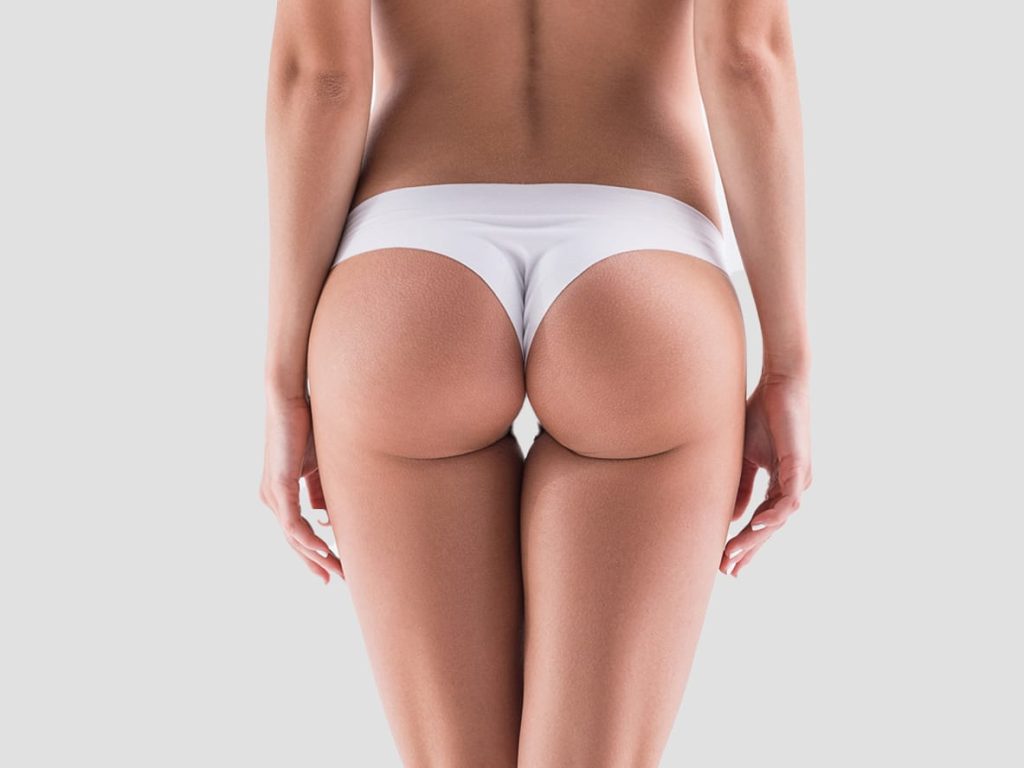Liposuction with fat transfer for subtle body enhancements in cosmetic surgery has gained popularity over the years among plastic surgeons, particularly for managing fatty tissue, often following a plastic surgery training program. This technique allows individuals to sculpt their bodies while enhancing areas that may need a boost. It combines the removal of unwanted fat from one area and its reinjection into another, creating a more balanced silhouette.
Historically, liposuction emerged in the late 20th century as a way to contour the body. Over time, it evolved, leading to innovative methods like fat transfer. This approach not only helps in reducing stubborn fat but also offers natural-looking results. Many people now opt for this dual benefit of fat transfer surgeries, seeking a refined appearance with quality fat without drastic changes.
Key Takeaways
-
Liposuction with fat transfer is an effective way to enhance your body subtly, allowing you to reshape areas while using your own fat for natural-looking results.
-
Ideal candidates for this procedure are those with enough excess fat and realistic expectations about the outcomes, making it important to consult with a qualified professional.
-
Common areas for fat transfer include the breasts, buttocks, and face; choose a target area that aligns with your personal enhancement goals.
-
The procedure involves removing fat from one area and injecting it into another, which can lead to longer-lasting results compared to synthetic fillers.
-
Recovery typically takes a few weeks, but you should follow post-operative care instructions closely to ensure optimal healing and results.
-
Always discuss the potential risks and safety concerns with your doctor before proceeding, as understanding these factors is crucial for informed decision-making.
Understanding Fat Transfer
Definition
Fat transfer is a procedure that involves removing fat from one part of the body. This fat is then injected into another area. The goal is to enhance body contours. The process reshapes and improves the body’s appearance naturally.
This technique is also known as autologous fat transfer, fat grafting, fat injections, or lipofilling. It uses the patient’s own fat, which reduces the risk of allergic reactions. Doctors often choose this fat grafting method for its safety and effectiveness in fat transfer surgeries.
Procedure Steps
The procedure begins with liposuction. Surgeons remove fat from areas like the abdomen, thighs, or hips. They use a thin tube called a cannula to extract the fat. This step usually requires local or general anesthesia.
After collecting the fat, doctors prepare it for injection. They clean and process the fat to ensure quality. This step removes any impurities and excess fluids.
Once ready, the surgeon injects the purified fat into the desired area. Common areas for injection include fat grafting in the face, breasts, and buttocks. The amount of fat transferred varies based on individual needs.
Goals of Fat Transfer
The main goal of fat transfer is to enhance body contours naturally. Patients seek this procedure for various reasons. Some want fuller lips or cheeks through fat grafting, while others desire a more rounded buttocks.
Fat transfer can also improve skin texture. It helps fill in wrinkles and creases with fat graft, giving a youthful appearance. Many prefer this method over synthetic fillers because it uses their own tissue.
Patients appreciate the subtle enhancements that fat transfer provides. Unlike implants, which can create dramatic changes, fat transfer offers a more natural look. Results appear gradual and blend seamlessly with existing features.
Recovery Process
Recovery from fat transfer varies by individual. Most patients experience swelling and bruising in both the donor fat graft and injection sites. These effects usually subside within a few weeks.
Surgeons recommend avoiding strenuous activities during recovery. Following post-operative care instructions for the fat graft is essential for optimal results. Patients should wear compression garments to support healing.
Many return to regular activities in about one week but may need longer for full recovery after a fat graft. Results become more visible as swelling decreases over time.
Considerations
Fat transfer is not suitable for everyone. Candidates should be in good health and have enough excess fat for removal. Discussing expectations with a qualified surgeon is crucial before deciding on this procedure.
Understanding the benefits and limitations of fat transfer helps patients make informed choices. With proper planning, many achieve their desired body enhancements through this technique.
Benefits of Liposuction with Fat Transfer
Dual Benefit
Liposuction with fat transfer offers a dual benefit. It removes unwanted fat from one area while enhancing another. Patients often choose this procedure to shape their bodies more effectively. With surgical liposuction, excess fat can be taken from areas like the abdomen or thighs. This fat is then purified and injected into areas that need volume, such as the breasts or buttocks.
The combination of these two procedures allows for a more balanced figure. Many patients appreciate this approach because they achieve two goals at once. They can slim down in one area while adding fullness in another.
Natural Results
The use of the patient’s own fat leads to natural-looking results. Unlike synthetic fillers, using body fat reduces the risk of allergic reactions. The body accepts its own tissue better than foreign materials. This means the results often look smoother and more natural.
Patients enjoy the fact that their enhancements blend seamlessly with their bodies. The fat transferred integrates well into the surrounding tissues. Over time, it can even develop its own blood supply. This process enhances the longevity of the results.
Improved Proportions
Liposuction with fat transfer also improves body proportions and symmetry. Many individuals feel self-conscious about uneven body shapes or sizes. This procedure helps create a more harmonious appearance.
For example, someone might have larger hips but a smaller bust. By removing fat from the hips and transferring it to the bust, they can achieve better balance. This improvement boosts confidence and satisfaction with one’s appearance.
Minimal Scarring
Another advantage includes minimal scarring compared to traditional liposuction techniques. Surgeons make small incisions during the process. These incisions are less noticeable than those from other surgical methods. Patients tend to heal faster due to smaller wounds.
People appreciate this aspect since they want to avoid visible scars after surgery. The focus remains on enhancing their bodies without drawing attention to the procedure itself.
Versatile Applications
This technique has various applications beyond just lip enhancement. It can improve facial features, like cheeks or jawlines, too. By providing volume where needed, it creates a youthful look.
Many patients find this versatility appealing. They can customize their enhancements based on personal preferences and needs.
Suitable Candidates for Fat Transfer
Ideal Candidates
Good candidates for liposuction with fat transfer are typically those who are close to their ideal body weight. These individuals should also be in good health, as overall wellness plays a significant role in the success of the procedure. A healthy lifestyle can enhance results and ensure a smoother recovery.
Candidates must have enough unwanted fat available for removal. This excess fat is crucial because it provides the material needed for transfer to other areas of the body. Without sufficient adipose fat, the procedure may not be feasible or effective.
Realistic Expectations
Realistic expectations are vital for anyone considering this procedure. Patients should understand that liposuction with fat transfer aims for subtle enhancements rather than dramatic changes. Those seeking noticeable alterations might feel disappointed if they do not achieve their desired look.
Potential patients should also recognize that results can vary based on individual circumstances. Factors such as skin elasticity and body type play a role in how well the transferred fat integrates into the new location.
Consultation with Surgeons
Choosing an experienced plastic surgeon is essential for successful outcomes. A skilled surgeon will evaluate each candidate’s unique situation during consultations. They will assess body composition and discuss goals to determine if someone qualifies as a suitable candidate.
Surgeons often explain the importance of quality fat in these procedures. Not all fat cells survive after transfer. Healthy, well-preserved fat cells lead to better results and longer-lasting effects. Surgeons may also use techniques to ensure that the transferred fat has the best chance of thriving in its new location.
Understanding Risks
Every surgical procedure comes with risks. Candidates should be aware of potential complications associated with liposuction and fat transfer. Common risks include infection, uneven results, and changes in skin texture. Discussing these risks with a plastic surgeon helps prepare candidates for what to expect.
Surgeons emphasize the importance of following pre- and post-operative instructions closely. Adhering to guidelines can minimize complications and improve overall satisfaction with the results.
Common Body Parts for Fat Transfer
Breasts
Fat transfer can enhance breast size and shape. Many women choose this option over implants. The procedure is known as breast augmentation. Surgeons remove fat from areas like the abdomen or thighs. They then inject it into the breasts. This method provides a more natural look and feel.
e women prefer fat transfer because it avoids foreign materials. The results can last longer than implants if done correctly. Patients often appreciate the added benefit of body contouring in donor areas.

Buttocks
The Brazilian butt lift (BBL) is a popular procedure. It uses fat transfer to create fuller, rounder buttocks. Surgeons first extract fat from areas such as the abdomen, flanks, or thighs. After purification, they inject this fat into the buttocks.
Many patients report satisfaction with their new curves. The BBL not only enhances the butt but also shapes the waist and thighs. This creates an appealing hourglass figure.
Face
Facial enhancements are another common use of fat transfer. Many people seek higher cheekbones or fuller lips. Fat can fill in wrinkles around the mouth and eyes. This gives a youthful appearance.
Surgeons often perform these procedures under local anesthesia. Recovery tends to be quicker than other surgical options. Results can last for years, making it a popular choice.
Hips
Fat transfer can also improve hip contours. Some individuals want a more balanced silhouette. By adding volume to the hips, patients achieve a more feminine shape.
This procedure often complements other body enhancements like the BBL or breast augmentation. Patients enjoy a harmonious look across their entire body.
Cheeks
Enhancing cheek volume can lead to a youthful face. Fat transfer to cheeks can restore lost volume due to aging or weight loss. This procedure smooths out lines and adds definition.
Patients often notice an improvement in their overall facial symmetry after treatment. A well-defined cheekbone structure contributes to an attractive profile.
Under Eyes
Fat transfer can reduce dark circles and hollows under the eyes. This area is delicate and requires precision during injection. Surgeons carefully place fat to ensure natural results without lumps.
Many patients find this procedure refreshing. It brightens their appearance and reduces signs of fatigue.
The Fat Transfer Procedure
Steps Involved
The fat transfer procedure begins with liposuction. Surgeons remove excess body fat from areas like the abdomen or thighs. This fat serves as the donor fat for the process.
Next, doctors purify the extracted fat cells. They use a centrifuge to separate healthy fat cells from other fluids and debris. This step ensures only viable fat is injected into the target area.
Finally, the purified fat is injected into the desired locations. These can include the face, breasts, or buttocks. The fat transfer process can enhance volume and improve contours.
Anesthesia Options
Surgeons usually administer anesthesia during the procedure. Local anesthesia numbs specific areas, while general anesthesia puts patients to sleep. The choice depends on how extensive the surgery will be.
Patients should discuss their options with their surgeon beforehand. This helps ensure comfort throughout the operation.
Session Details
The fat transfer surgeries can be completed in one session or multiple sessions. The decision relies on the desired volume of fat transfer.
In some cases, patients may require more than one visit to achieve their goals. Each session allows for additional fat grafting if needed.
Recovery Expectations
After the procedure, patients might experience swelling and bruising at both the donor and injection sites. These effects typically subside within a few weeks.
Doctors provide guidelines for post-operative care. Following these instructions helps ensure optimal healing and results.
Longevity of Results
Results from fat transfers can last several months to years. However, some of the injected fat may get reabsorbed by the body over time.
Surgeons often recommend follow-up appointments to assess outcomes. This way, adjustments can be made if necessary.
Ideal Candidates
Not everyone is a candidate for fat transfer surgery. Ideal patients have enough donor fat available and realistic expectations about results.
People looking for subtle enhancements often benefit most from this procedure. It provides natural-looking results without synthetic implants.
Expected Results and Longevity
Permanent Results
Results from liposuction with fat transfer are generally permanent. The procedure removes fat from areas of the body, enhancing volume in other regions. However, not all fat cells survive the transfer process. Some may die or be absorbed by the body. This can lead to a slight decrease in volume over time. Despite this, many patients enjoy lasting effects.
Timeline for Results
It takes about six months to see the final results after the procedure. Initially, swelling and bruising may obscure the true appearance. As healing progresses, the shape and contour become clearer. Patients often notice changes gradually during this period. Regular follow-ups with a healthcare provider help monitor progress.
Natural Appearance
Fat transfer achieves a natural and youthful appearance. Unlike synthetic fillers, using one’s own fat creates harmonious results. The transferred fat integrates with surrounding tissues. This integration leads to smoother transitions between treated areas. Many patients report feeling more confident in their bodies after the procedure.
Areas of Enhancement
Common areas for fat transfer include the face, breasts, and buttocks. Each area benefits uniquely from added volume. For example, transferring fat to the face can smooth wrinkles and restore fullness. In contrast, enhancing breast or buttock volume can create more curves.
Patient Experience
Patient experience varies based on individual goals and anatomy. Some seek subtle enhancements while others desire more noticeable changes. Understanding personal objectives helps guide decisions about treatment plans. Consulting with a qualified surgeon is crucial for achieving desired results.
Volume Considerations
Volume is an important factor in liposuction with fat transfer. Surgeons assess how much fat can be safely harvested and transferred. Too little fat may not yield significant changes, while too much can lead to complications. A careful balance ensures both safety and satisfaction.
Maintaining Results
Maintaining results requires ongoing care post-procedure. Healthy lifestyle choices support long-lasting effects. Regular exercise and a balanced diet play key roles in keeping weight stable. Gaining or losing significant weight can alter appearance after the procedure.
Recovery Process and Timeline
Initial Recovery
The recovery from liposuction with fat transfer varies for each patient. Swelling and bruising are common after the procedure. These effects usually peak within the first few days. Most patients experience discomfort, but pain can often be managed with prescribed medications.
Patients should expect to wear compression garments. These help reduce swelling and support the treated areas. It’s essential to keep these garments on as advised by the surgeon.
Returning to Activities
Most patients can return to normal activities within a few weeks. Light activities can typically resume within a few days after the session. However, strenuous exercise should wait at least three to six weeks. This timeline allows the body to heal properly.
Each individual has a unique healing process. Factors such as age, health, and adherence to post-operative care play significant roles. Following the surgeon’s advice is crucial for a smooth recovery.
Post-Operative Care
Post-operative care is vital for achieving optimal results. Surgeons provide specific instructions that must be followed closely. Patients should attend all follow-up appointments to monitor progress.
Hydration is important during recovery. Drinking plenty of water aids in healing and reduces swelling. A balanced diet supports overall recovery and energy levels.
Avoiding smoking and alcohol is also recommended during this period. Both substances can hinder healing and affect final results.
Long-Term Considerations
While most of the swelling subsides within weeks, some residual swelling may last longer. Full results can take several months to become apparent. Patience is necessary during this time.
Maintaining a stable weight is key after any liposuction procedure. Weight fluctuations can alter the results achieved through fat transfer. Engaging in regular physical activity promotes long-term success.
Understanding the recovery timeline helps manage expectations. Patients should be aware that every body responds differently to procedures like liposuction with fat transfer.
In summary, the recovery process involves initial swelling and bruising, which are typical after the procedure. Most individuals can return to their daily routines within a few weeks, provided they follow post-operative care instructions carefully. This attention to care significantly influences their results.
Safety and Risks of Fat Transfer
General Safety
Fat transfer is generally safe. It is a common procedure in cosmetic surgery. An experienced plastic surgeon can perform it with minimal complications. Surgeons use fat from your body to enhance other areas. This method reduces the risk of allergic reactions since it uses your own tissue.
Potential Risks
Despite its safety, certain risks exist. Infection is one of the most common concerns. Bacteria can enter the body during the procedure, leading to infection. Immediate medical attention is necessary if signs of infection appear.
Another serious risk is fat embolism. This occurs when fat enters the bloodstream and blocks blood vessels. Fat embolism can lead to severe complications, including respiratory issues or even death.
Uneven results are also possible. Sometimes, the transferred fat does not settle evenly in the new area. This can lead to lumps or uneven contours, which may require additional procedures to correct.
Importance of Choosing a Qualified Surgeon
Choosing a qualified surgeon is crucial for minimizing risks. A skilled surgeon has experience with fat transfer techniques. They understand how to handle potential complications effectively. Researching a surgeon’s credentials and past patient reviews can help you make an informed decision.
Ask questions during consultations. Inquire about their training, experience, and success rates with fat transfer procedures. Understanding their approach will give you confidence in your choice.
Aftercare Considerations
Aftercare plays a significant role in recovery and safety. Following post-operative instructions helps reduce risks of complications like infection or uneven healing.
Patients should monitor their bodies closely after surgery. Any unusual symptoms should prompt immediate contact with the surgeon. Early detection of issues can lead to quicker resolutions.
Discussing all concerns with your surgeon before the procedure helps set realistic expectations. Understanding what to expect during recovery is key to feeling comfortable with the process.
Combining Fat Transfer with Other Procedures
Enhanced Results
Fat transfer can enhance the results of other cosmetic procedures. It is often combined with facelifts or tummy tucks. This combination allows for more comprehensive body contouring. Patients can achieve a more balanced and natural look. For example, during a facelift, fat can be transferred to the cheeks or temples. This adds volume and creates a youthful appearance.
Recovery Considerations
Combining procedures may extend recovery time. Each procedure has its own healing process. When performed together, the body must heal from multiple areas. Patients should prepare for a longer downtime. However, the benefits often outweigh this concern. Enhanced outcomes can lead to higher satisfaction rates.
Specific Applications
Fat transfer also plays a role in breast reconstruction. After mastectomy, women may choose to restore breast volume using their own fat. This method provides a natural feel and reduces complications associated with implants. Surgeons can use fat grafting to create a more feminine silhouette.
Comprehensive Approach
A comprehensive approach improves overall body contouring results. Combining liposuction with fat transfer allows for targeted enhancements. For instance, excess fat can be removed from one area and added to another. This dual action shapes the body while enhancing specific features.
Patient Satisfaction
Patients report high levels of satisfaction when combining these procedures. They appreciate the natural results that fat transfer offers. Many enjoy seeing immediate changes post-surgery. The ability to sculpt their bodies in one operation is appealing.
Consultation Importance
Consultation with a qualified surgeon is crucial. They assess individual needs and goals during the initial visit. A tailored plan ensures that patients understand what to expect from each procedure. Surgeons will discuss potential risks and recovery timelines as well.
Final Remarks
Liposuction with fat transfer offers a fantastic way to achieve subtle body enhancements. You gain the dual benefits of body contouring and volume restoration. This procedure is not just about aesthetics; it boosts your confidence and self-image. With proper understanding, suitable candidates can enjoy lasting results and a smoother recovery process.
Safety is key, and knowing the risks helps you make informed decisions. If you’re considering this option, consult with a qualified expert to discuss your goals. Take the first step towards enhancing your natural beauty today. Your journey to a more confident you starts now!
Frequently Asked Questions
What is liposuction with fat transfer?
Liposuction with fat transfer involves removing excess fat from one area of the body and injecting it into another. This technique enhances body contours while providing natural-looking results.
Who are the ideal candidates for this procedure?
Ideal candidates are generally healthy adults with specific areas of fat to remove and volume deficits in other areas. A consultation with a qualified surgeon can determine suitability.
How long do the results of fat transfer last?
Results can last several years, but factors like aging, weight fluctuations, and lifestyle choices may affect longevity. Maintaining a stable weight can help preserve your results.
What are common areas for fat transfer?
Common areas include the breasts, buttocks, face, and hands. These areas benefit from added volume and improved contouring, providing subtle enhancements.
Is the fat transfer procedure safe?
Yes, when performed by a qualified plastic surgeon, fat transfer is considered safe. However, as with any surgery, there are risks involved that should be discussed beforehand.
How long is the recovery process?
Recovery typically takes 1-2 weeks. Most patients return to normal activities in this timeframe, although full results may take several months to manifest.
Can I combine fat transfer with other cosmetic procedures?
Yes, fat transfer can be safely combined with other procedures like breast augmentation or tummy tuck for enhanced results. Discuss your goals during your consultation for personalized options.





